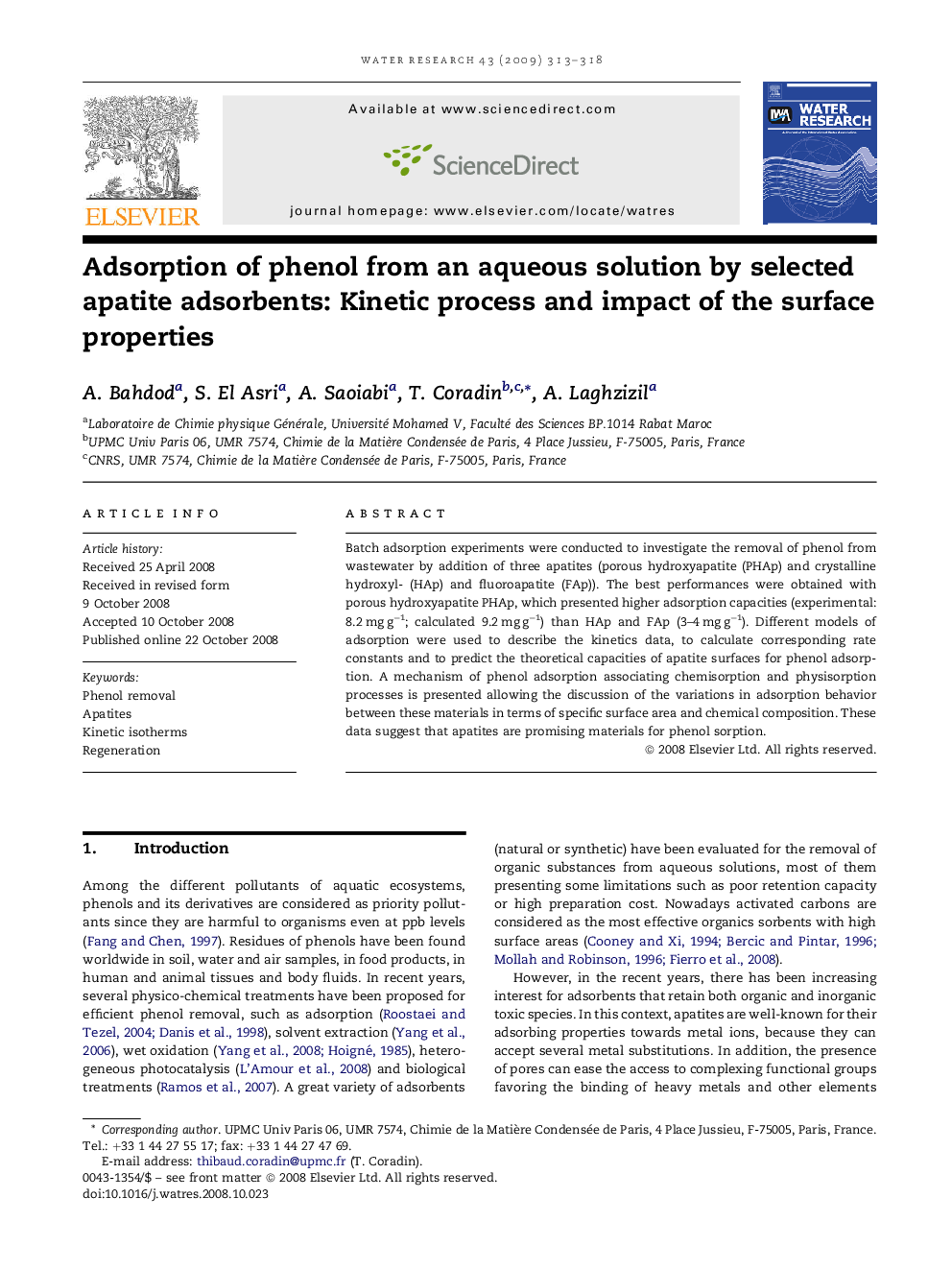| Article ID | Journal | Published Year | Pages | File Type |
|---|---|---|---|---|
| 4484430 | Water Research | 2009 | 6 Pages |
Batch adsorption experiments were conducted to investigate the removal of phenol from wastewater by addition of three apatites (porous hydroxyapatite (PHAp) and crystalline hydroxyl- (HAp) and fluoroapatite (FAp)). The best performances were obtained with porous hydroxyapatite PHAp, which presented higher adsorption capacities (experimental: 8.2 mg g−1; calculated 9.2 mg g−1) than HAp and FAp (3–4 mg g−1). Different models of adsorption were used to describe the kinetics data, to calculate corresponding rate constants and to predict the theoretical capacities of apatite surfaces for phenol adsorption. A mechanism of phenol adsorption associating chemisorption and physisorption processes is presented allowing the discussion of the variations in adsorption behavior between these materials in terms of specific surface area and chemical composition. These data suggest that apatites are promising materials for phenol sorption.
